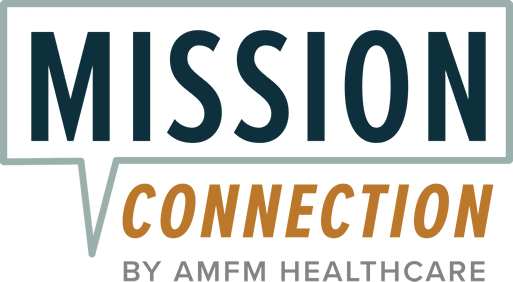The Lowdown on Tricyclic Antidepressants (TCAs): How They Work and What They’re Used For

When your mental or physical health becomes a burden that’s too heavy to bear, you may feel like you’ve exhausted every possible avenue to feeling better. Perhaps you’ve tried talking to someone, made healthy lifestyle changes, or even sought therapy.
If this is the case for you, the option of medication may have come up in conversation with a healthcare provider, possibly leading to the question “What are tricyclic antidepressants?”
Tricyclic antidepressants (TCAs) are medications originally designed to treat the symptoms of depression, but they’re also commonly used for a variety of other mental and physical issues. Yet TCAs come with a range of side effects that can affect how well many people tolerate them.
A mental health provider, like Mission Connection, can talk to you about whether TCAs are a good fit for you – and if there are any alternatives for your needs. This article also works as a helpful guide, covering…
- What tricyclic antidepressants are
- How TCAs work
- Conditions tricyclics are used to treat
- Potential tricyclic antidepressant side effects
- How to stop TCAs safely
- Answers to frequently asked questions about TCAs
- Where to find professional mental health and medication guidance

What Are Tricyclic Antidepressants?
The origins of TCAs can be traced back to the late 1950s, with the introduction of the first Food and Drug Administration (FDA) approved tricyclic medication: imipramine (Tofranil).2 This makes tricyclics one of the earliest medications designed to treat depression. However, while they still work for treating depressive symptoms, they’ve been pushed down the list of treatment options for a reason – their risk of side effects.
Because of their high risk of side effects, are TCAs still used today? In short, yes. But healthcare providers typically look towards the generally better-tolerated antidepressants as first-line treatments. These include selective serotonin reuptake inhibitors (SSRIs) and serotonin norepinephrine reuptake inhibitors (SNRIs).
Yet, everybody’s physical makeup is different, as are their mental health needs. So, if someone doesn’t respond as desired to SSRIs or SNRIs, then tricyclics may become a viable option. Plus, as mentioned, tricyclics aren’t only prescribed for depression. A doctor may also prescribe them off-label to help…
Break the cycle of pain- Improve the sleep-wake cycle
- Reduce physical symptoms of pain
How Do TCAs Work?
However, unlike second-generation antidepressants, tricyclics typically target norepinephrine more than the “happy hormone,” serotonin. TCAs also work differently by stimulating a range of other receptors in the brain. It’s these differences between first and second-generation antidepressants that make tricyclics less tolerated by a wider range of people. For instance, the additional chemicals they target can lead to dizziness, memory issues, and drowsiness, among other issues.2
Based on how tricyclics often lead to more side effects, they’re not the go-to medications for treating mental health issues such as anxiety and depression. But they still have an important place in healthcare, such as when other medications haven’t worked or in the treatment of sleep problems and chronic pain.
There is a wide range of tricyclic antidepressants, which are often prescribed for different purposes. Let’s briefly consider the TCA medications list before moving on to the conditions they’re commonly used to treat.
TCA Medications List:
- Imipramine (Tofranil)
- Amitriptyline (Elavil)
- Amoxapine (Asendin)
- Nortriptyline (Pamelor)
- Trimipramine (Surmontil)
- Protriptyline (Vivactil)
- Doxepin (Silenor)
- Desipramine (Norpramin)
- Clomipramine (Anafranil)
With such an extensive list of medications, trying to determine whether one tricyclic is more suitable for your needs might feel like trying to pinpoint a drop in the ocean. However, each one works slightly differently from the other, so a provider can talk to you about your symptoms and needs to help you come to the right choice for you. The following sections may also help.
Uses of Tricyclic Antidepressants
The FDA has approved a variety of tricyclics for treating depression, including imipramine, amitriptyline, and nortriptyline, among others. However, the FDA has also approved certain tricyclics for other conditions. For instance, clomipramine is sometimes used to treat the symptoms of obsessive-compulsive disorder (OCD). Additionally, imipramine is FDA-approved for panic disorder and depression-related anxiety.
As mentioned, tricyclics are also prescribed off-label for issues such as pain-related conditions and sleep problems. The following sections explore how tricyclics can be used for conditions other than depression.
TCA Medications for Anxiety
A provider may decide to treat anxiety with tricyclics if the second-generation antidepressants have not proven to be effective. However, the risk of side effects with tricyclics is higher, so they’re not considered to be a first-line defence. For this reason, tricyclic dosage for anxiety tends to be raised slowly to ensure the minimum amount needed for seeing benefits is used.3
TCAs for Chronic Pain
TCAs for Fibromyalgia
Tricyclic Antidepressants for Migraines
Potential Tricyclic Antidepressant Side Effects
By this point, we’ve mentioned tricyclic antidepressant side effects a number of times. This is because the newer, second-generation antidepressants were developed specifically to provide an alternative to TCAs’ less-tolerated effects.
If a provider prescribes tricyclic antidepressants for your or a loved one’s symptoms, it’s because the better-tolerated alternatives have been exhausted or there are no other options. However, different tricyclics can have varying side effects. Plus, people often respond to the same medication uniquely. In other words, what might cause side effects in you might be well tolerated in someone else.
The following are common tricyclic antidepressant side effects. These often ease during the adjustment period, but if they persist, it’s worth checking in with your provider. They may talk to you about altering your dose or switching to another medication.
Tricyclic Antidepressant Side Effects:7
- Dizziness
- Constipation
- Dry mouth
- Blurred vision
- Confusion
- Difficulties urinating
- Sedation
- Increased appetite
- Weight gain
- Irregular heartbeat
- Low blood pressure
Secondly, TCAs can contribute to heart issues and raise liver enzymes. Therefore, they’re not prescribed for people with a history of cardiac or liver problems. They can also increase the risk of seizures in people with epilepsy.7
Finally, there is a greater risk of tricyclic antidepressant overdose in comparison to other antidepressants. TCA overdose symptoms include dizziness, fainting, low blood pressure, irregular heartbeat, and seizures. TCA overdose can be fatal in extreme cases. If you notice any of these symptoms in yourself or someone else, it’s important to seek immediate medical assistance.8
For all of these reasons, the decision to prescribe tricyclic antidepressants is never taken lightly. A provider will assess medical history and current physical and mental well-being, as well as continue to monitor reactions to the medication throughout the course of treatment.
Stopping Tricyclics Safely: How to Taper off TCAs
There are many reasons why people might want to come off TCAs. For instance, they might feel like their symptoms no longer warrant medication, or find that the side effects of tricyclic antidepressants outweigh the benefits. If this is the case for you, you might be wondering how to stop taking TCAs.
Successfully stopping TCAs requires a slow and monitored approach. Suddenly stopping tricyclic antidepressants increases the risk of TCA withdrawal symptoms and the return of mental health symptoms. Yet tapering the dose over time under the guidance of a professional gives people the best chance at success and long-term recovery.
When stopping tricyclic antidepressants, it’s good to keep an eye out for TCA withdrawal symptoms. If you notice any of the following, make sure to communicate your concerns with your provider so they can manage any discomfort.
TCA Withdrawal Symptoms:9
- Stomach upset
- Restlessness
- Irritability
- Sleep disturbances
- Anxiety
- Flu-like symptoms
- Headaches
- Lethargy or drowsiness
- Sensory issues, such as feelings of burning or tingling
Frequently Asked Questions About Tricyclic Antidepressants
This article aims to answer as many questions as possible about TCAs and their use in mental health and chronic pain conditions. Yet, as there is a long list of TCAs, their effects can vary – often leading to many questions and concerns. For this reason, we give answers to some FAQs about TCAs to help shed light on whether they’re the right fit for your needs.
Are TCAs Still Used Today?
Yes, tricyclic antidepressants are still used today, but, although they were created to treat depression, they’re currently more commonly prescribed for off-label conditions, such as chronic pain. When it comes to mental health conditions, second-generation antidepressants are often trialled first due to their lower risk of side effects. If these don’t work for your needs, your provider may talk to you about tricyclics.
Which Is the Right Antidepressant for Me? TCAs vs SSRIs
The right antidepressant for your needs will come down to your symptoms, age, weight, and so on. However, as discussed, SSRIs and SNRIs are normally the go-to for treating the majority of mental health conditions due to how well tolerated they are by many people.
Can TCAs Cause Weight Gain?
Are Tricyclic Antidepressants Safe Long Term?
Mission Connection: Guiding You Through Meaningful Mental Health Treatment
When your life becomes troubled by mental or physical health concerns, returning to your status quo may become your main priority. You may long for the days when you felt hopeful, less anxious, slept better, or when physical pain wasn’t always burning during every movement.
Medication, such as tricyclic antidepressants, might seem like the solution to your problems – and for some people, perhaps it is. However, tricyclics aren’t a good fit for everyone due to their risk of side effects. So, what are the alternatives when you feel like your issues are a puzzle you can’t solve?
Mission Connection can help you put the pieces of the puzzle together. Our team of licensed professionals can guide you on the right choice of medication for your needs, as well as offer options for getting to the root of your issues. Medication works best alongside therapy for treating mental health issues, so we can ensure the best chance at long-term recovery by discussing the right evidence-based treatment package for you.
If you’re ready to talk or just want to ask more questions about medication, Mission Connection is always available. Contact us today to find out more.

References
- Hull University Teaching Hospitals NHS Trust. (n.d.). Tricyclics anti-depressants for pain relief [Patient information leaflet]. https://www.hey.nhs.uk/patient-leaflet/tricylics-antidepressants-pain-relief/
- Hillhouse, T. M., & Porter, J. H. (2015). A brief history of the development of antidepressant drugs: From monoamines to glutamate. Experimental and Clinical Psychopharmacology, 23(1), 1. https://doi.org/10.1037/a0038550
- Bandelow, B., Michaelis, S., & Wedekind, D. (2017). Treatment of anxiety disorders. Dialogues in Clinical Neuroscience, 19(2), 93. https://doi.org/10.31887/DCNS.2017.19.2/bbandelow
- Reinert, J. P., Veronin, M. A., & Medina, C. (2022). Tricyclic Antidepressants in Nociceptive and Neuropathic Pain: A Review of Their Analgesic Properties in Combination With Opioids. The Journal of Pharmacy Technology : JPT : Official Publication of the Association of Pharmacy Technicians, 39(1), 35. https://doi.org/10.1177/87551225221139699
- Moret, C., & Briley, M. (2006). Antidepressants in the treatment of fibromyalgia. Neuropsychiatric Disease and Treatment, 2(4), 537. https://doi.org/10.2147/nedt.2006.2.4.537
- Liu, Y. (2017). Tricyclic antidepressants for preventing migraine in adults. Medicine, 96(22), e6989. https://doi.org/10.1097/MD.0000000000006989
- Moraczewski, J., & Aedma, K. K. (2023). Tricyclic antidepressants. In StatPearls. StatPearls Publishing. https://www.ncbi.nlm.nih.gov/books/NBK557791/
- BMJ Best Practice. (n.d.). Tricyclic antidepressant overdose. BMJ Publishing Group. https://bestpractice.bmj.com/topics/en-gb/342
- Garner, E. M., Kelly, M. W., & Thompson, D. F. (1993). Tricyclic antidepressant withdrawal syndrome. Annals of Pharmacotherapy, 27(9), 1068–1072. https://doi.org/10.1177/106002809302700912
- Gill, H., Gill, B., El-Halabi, S., Chen-Li, D., Lipsitz, O., Rosenblat, J. D., Van Rheenen, T. E., Rodrigues, N. B., Mansur, R. B., Majeed, A., W. Lui, L. M., Nasri, F., Lee, Y., & Mcintyre, R. S. (2020). Antidepressant Medications and Weight Change: A Narrative Review. Obesity, 28(11), 2064-2072. https://doi.org/10.1002/oby.22969
- Kamp, C. B., Petersen, J. J., Faltermeier, P., Juul, S., Siddiqui, F., Barbateskovic, M., Kristensen, A. T., Moncrieff, J., Horowitz, M. A., Hengartner, M. P., Kirsch, I., Gluud, C., & Jakobsen, J. C. (2024). Beneficial and harmful effects of tricyclic antidepressants for adults with major depressive disorder: A systematic review with meta-analysis and trial sequential analysis. BMJ Mental Health, 27(1), e300730. https://doi.org/10.1136/bmjment-2023-300730






